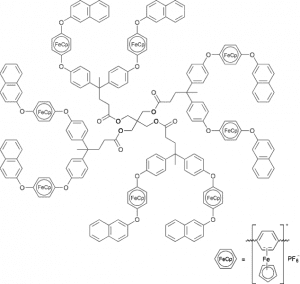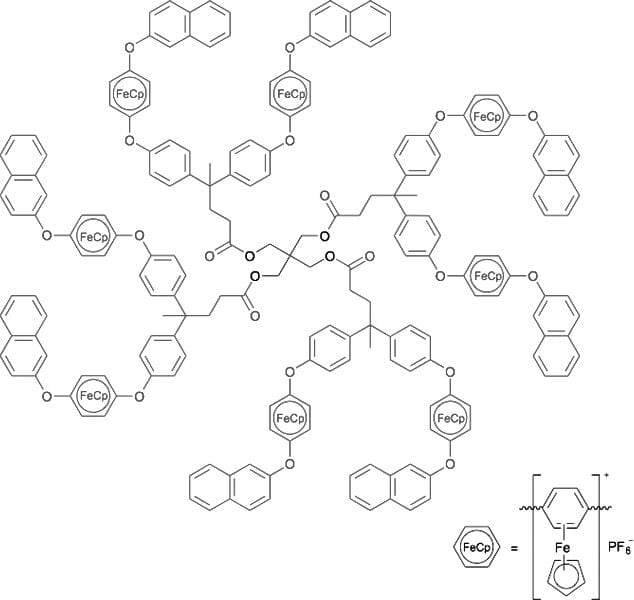 Researchers at the Chemistry Department of the University of Prince Edward Island discussed the synthesis, redox and photophysical fingerprints of a new family of organoiron dendrimers in work published in Issue 4 of Macromolecular Chemistry and Physics in 2015.
Researchers at the Chemistry Department of the University of Prince Edward Island discussed the synthesis, redox and photophysical fingerprints of a new family of organoiron dendrimers in work published in Issue 4 of Macromolecular Chemistry and Physics in 2015.
Three generations of these bifunctional organoiron dendrimers were reported, synthesized from a redox-active organoiron complex, η6-dichlorobenzene-η5-cyclopentadienyl-iron(II). Dendrimers are interesting polymers as their unique topology offers the possibility of multiple functionalizations, since the peripheral end groups, branches, cavities, and/or the core are all amenable to functionalization.
Alaa Abd-El-Aziz and his team exploited the facile chemistry of the complex to functionalize the dendritic peripheral with photoactive β-naphthol, yielding redox, photoactive bifunctional dendrimers under mild conditions: using convergent and divergent synthetic routes, or a combination of both, the dendrimers were synthesized in good yield without protection/deprotection steps.
To ascertain the redox and photophysical fingerprints of these dendrimers, they used cyclic voltammetry (CV), as well as well UV–vis and fluorescence spectroscopy measurements to characterize the resulting dendrimers.
The CV measurements suggested non-interacting redox-active iron centers within the dendritic structure, and a negative dendritic effect on the half-wave potential.
Irradiation of an acetonitrile/chloroform solution of the dendrimers for 24 hours with UV light yielded their organic analogues with a concomitant enhancement of the absorption and fluorescence properties.
The optical properties of the dendrimers were apparent, and these can be exploited in sensing and macromolecular photonics. Interestingly, the photophysical properties of the dendrimers were enhanced after UV irradiation, which transformed them to purely organic monofunctional dendrimers. The flexibility of the structure is expected to be useful in the design of further dendrimers, where peripheral electronic and photonic processes need to interact with those in the dendritic branch or core.
The synthetic approach to these dendrimers offers an attractive route to other redox, multifunctional organometallic dendrimers, which can be used in catalysis, biomedicine, and drug delivery, as well as in magnetic materials.
The Best of Macromolecular Journals Edition 2016 is a special reprint issue highlighting the most impressive contributions from over one thousand articles published across the Macromolecular Journals family in 2015. All of these articles are free to access for one year. Find out more at www.best-of-macros.de.

















